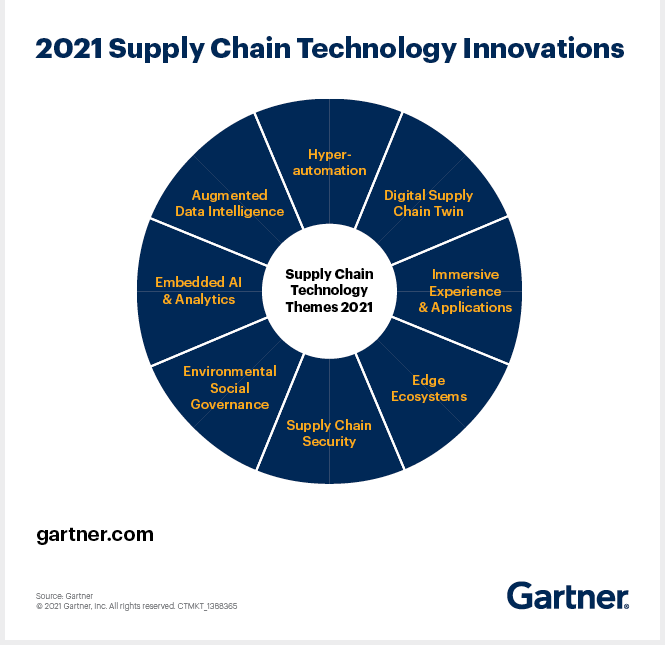The Future of Supply Chain Management: How Tech is Revolutionizing the Industry
The supply chain management landscape has undergone significant transformations in recent years, driven by the increasing demand for efficiency, agility, and transparency. The advent of cutting-edge technologies has disrupted traditional supply chain practices, enabling businesses to optimize their operations, reduce costs, and improve customer satisfaction. In this article, we’ll delve into the world of tech-powered supply chain management, exploring its benefits, challenges, and future prospects.
I. The Rise of Digital Transformation in Supply Chain Management
Digital transformation has become a buzzword in the corporate world, and supply chain management is no exception. With the proliferation of digital technologies, supply chain professionals are embracing new tools, techniques, and strategies to stay ahead of the competition. The drivers of digital transformation in supply chain management include:
- Increased demand for speed and agility: Companies need to respond quickly to changing market conditions, customer preferences, and supply chain disruptions.
- Rising expectations for transparency and accountability: Stakeholders demand real-time visibility into supply chain operations, enabling them to track inventory, shipments, and compliance.
- Need for cost reduction and efficiency gains: Businesses seek to optimize their supply chain operations, minimizing waste, and maximizing revenue.
II. The Role of Data Analytics in Supply Chain Optimization
Data analytics has emerged as a crucial tool in supply chain management, empowering businesses to make data-driven decisions. By leveraging insights from data analytics, companies can:
- Identify patterns and trends: Data analytics helps supply chain professionals recognize patterns and trends in demand, supply, and logistics, enabling them to anticipate and respond to changes in the market.
- Predict and prevent disruptions: With the aid of predictive analytics, businesses can identify potential risks and take proactive measures to mitigate their impact.
- Optimize inventory management: Data analytics informs inventory management decisions, ensuring that levels of stock are aligned with demand, reducing overstocking and understocking.
III. The Impact of Artificial Intelligence and Machine Learning on Supply Chain Automation
Artificial intelligence (AI) and machine learning (ML) are transforming supply chain management by automating manual tasks, enhancing predictive analytics, and improving decision-making. AI and ML can:
- Automate routine tasks: Computers can perform tasks such as data entry, reporting, and exception handling, freeing up supply chain professionals to focus on higher-value activities.
- Enhance predictive analytics: AI and ML algorithms analyze complex data sets, predicting supply chain outcomes and enabling proactive decision-making.
- Improve logistics and transportation management: AI-powered systems can optimize routes, reduce fuel consumption, and decrease carbon emissions.

IV. The Benefits of Internet of Things (IoT) in Supply Chain Management
The Internet of Things (IoT) is revolutionizing supply chain management by providing real-time visibility into logistics and transportation operations. IoT-enabled devices can:
- Track inventory and shipments: IoT sensors track inventory levels, detecting changes in stock and enabling real-time updates.
- Monitor temperature and condition: IoT sensors monitor temperature, humidity, and other conditions, ensuring that goods are transported safely and efficiently.
- Predict equipment failures: IoT sensors detect anomalies in equipment performance, enabling proactive maintenance and reducing downtime.
V. The Role of Blockchain in Supply Chain Security and Trust
Blockchain technology has the potential to transform supply chain management by providing a secure, transparent, and immutable record of transactions. Blockchain can:
- Ensure data integrity: Blockchain’s tamper-proof nature ensures that data remains accurate and reliable, promoting trust and confidence among stakeholders.
- Prevent counterfeiting: Blockchain-enabled systems track the origin, movement, and ownership of goods, reducing the risk of counterfeiting and product tampering.
- Facilitate collaboration: Blockchain platforms enable companies to collaborate and share data, promoting greater transparency and efficiency.
VI. The Future of Supply Chain Management: Trends and Predictions
As we look to the future, several trends and predictions are shaping the supply chain management landscape:
- Increased adoption of automation and robotics: Companies are investing in automation and robotics technologies to optimize logistics and transportation operations.
- Growing emphasis on sustainability: Businesses are prioritizing sustainability, adopting environmentally friendly practices, and reducing their carbon footprint.
- Rise of the gig economy: The gig economy is transforming supply chain management, with companies embracing flexible, on-demand labor models.
VII. Conclusion
The tech revolution in supply chain management is well underway, with businesses embracing new tools, techniques, and strategies to stay ahead of the competition. By harnessing the power of digital transformation, data analytics, AI, IoT, blockchain, and automation, companies can optimize their supply chain operations, reduce costs, and improve customer satisfaction. As we look to the future, it’s clear that supply chain management will continue to evolve and transform, driven by technological innovation and changing stakeholder expectations.
Share Your Thoughts:
How do you see tech transforming supply chain management in the future? Share your thoughts and insights in the comments below.


